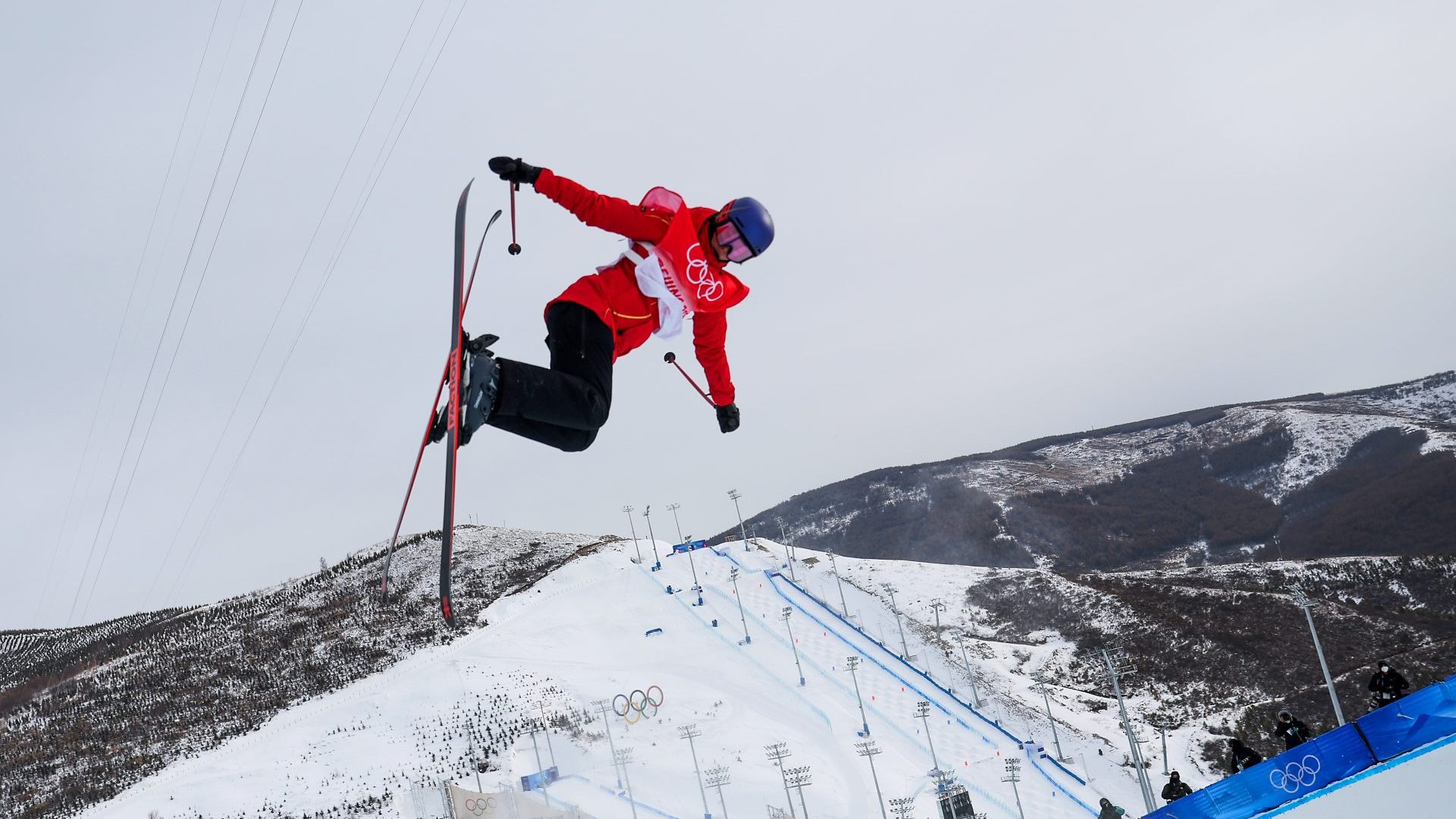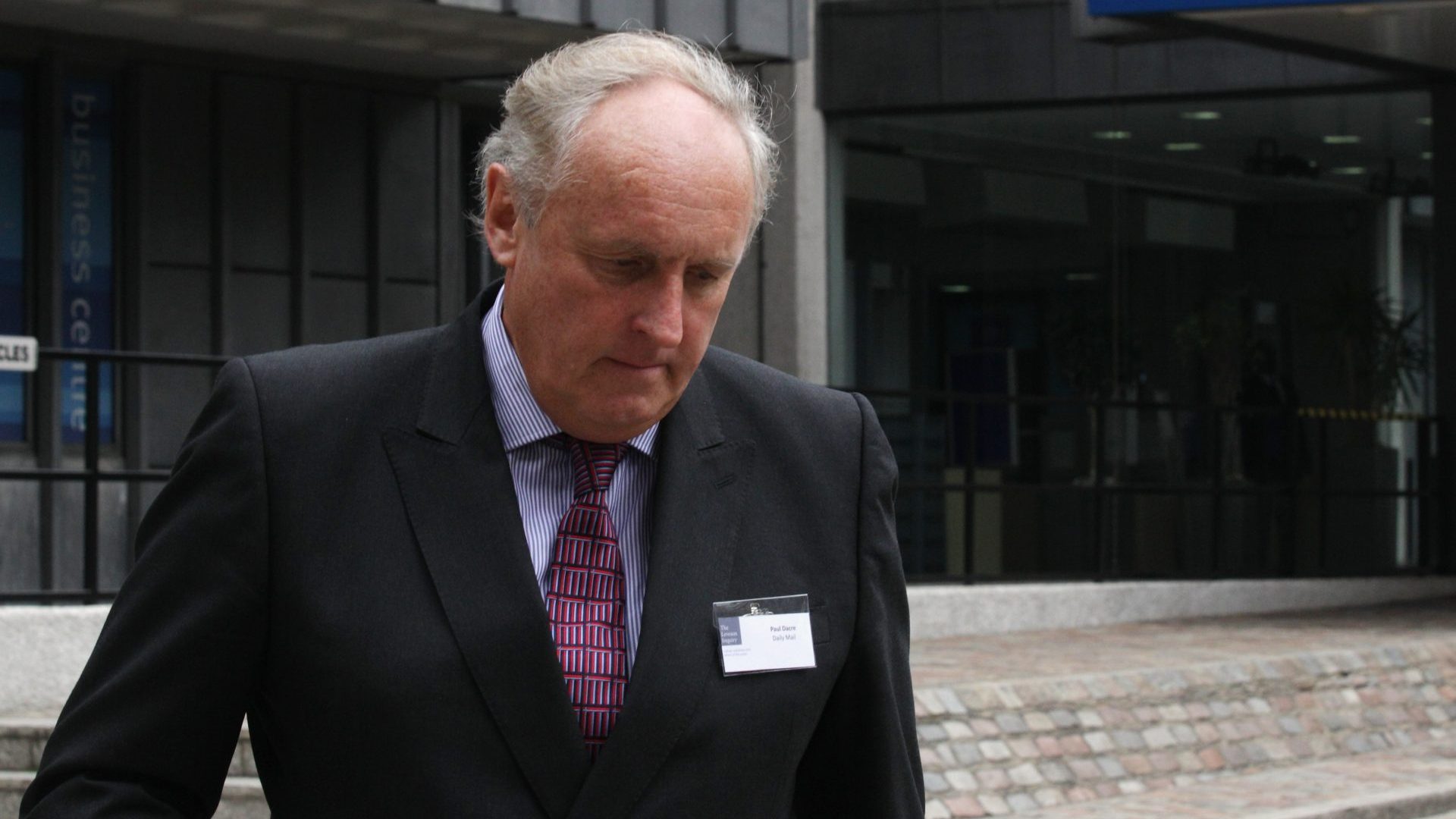The vast expanse of brown is striking. Only a few slivers of white break up the murky monotone of NASA’s images of the Winter Olympic Alpine sports venue near Beijing. And that’s not even real snow.
When the camera zooms out from the spectacle of freestyle skiers Eileen Gu and Mathilde Gremaud twisting in the air above the pristine-white ramp, it’s as if a slice of the Alps had been airlifted into a grubby industrial site.
It’s clear from almost any image of the 2022 Winter Olympics that Beijing is a completely unsuitable venue. Be prepared for more of the same. Climate change is making many venues unviable – slivers of fake snow is all we will have if we keep staging Winter Olympics while we’re effectively abolishing winter.
As professional mountain snowboarder Jeremy Jones told a US senate committee: “Winter as we know it will be halved in 2050 and by 2090, 80 per cent, which means it will be three weeks long. That is heartbreaking.”
As temperatures rise worldwide, traditionally cold areas feel the impact more quickly. Average February temperatures at the 19 cities to host the games since 1950 have soared by around 2.6 °C, according to Climate Central – that’s three times the global average in the same period. Beijing warmed by nearly 5°C.
According to a new study, of the 21 hosts since the competition began, only four will have the requisite conditions by the 2050s – Lillehammer, Oslo, Lake Placid and Sapporo – if current warming trends continue. Of these, only Sapporo remains viable by the 2080s, when February temperatures are projected to have risen by 4.4°C. For the Paralympics, held a month later, it’s worse.
The study, led by Canadian academic Daniel Scott, shows that venerable skiing venues such as Innsbruck, St Moritz, Calgary and 2026 hosts Cortina d’Ampezzo could all be wiped off the Olympics map. The previous hosts, Pyeongchang, and the inaugural 1924 hosts, Chamonix, are out of the picture in all scenarios.
But if the Paris climate goals are met, and the corresponding increase held to 2.7°C by the 2080s, eight venues survive. “It’s still our choice as to which of our futures we end up with,” Scott told me.
The consequences of warming are evident in Beijing. The snow that winds narrowly along a few mountaintops is close to 100 per cent man-made, requiring 350 snow producers working at full pelt for months, guzzling energy and water. Some observers linked a spate of surprising wipeouts on the snow. “Is changing climate sabotaging Olympic skiers like Mikaela Shiffrin?” asked former NASA meteorologist Marshall Shepherd, after watching the American double Olympic Champion crash out of two events. Unexpected crashes and disqualifications also occurred elsewhere. Only 46 competitors, just over half the field, finished the men’s Giant Slalom.
Shiffrin didn’t blame the artificial snow, but the man-made substance has drawn ire from some athletes. Scottish former freestyle skier Laura Donaldson has complained that freestyle super pipes formed from snowmakers in poor seasons have solid ice walls and floors: “This is dangerous for athletes. Some have died.”
Still, many skiers say they prefer it – the powder beloved of recreational skiers is not for them. Just as well, because there’s no escaping this: “In order to have a perfect course for Alpine racing, man-made snow is essential to get the right quality,” said Bernard Russi, Chairman of the International Skiing Federation (FIS)’s Alpine Committee.
The Beijing pictures are disturbing, but maybe they simply lay bare what has been happening all along – that elite events, and increasingly, recreational skiing, have long depended on fake snow.
When skiing first took off as a sport in the early 20th century, all winter sports took place outside in natural snow around simple, rural, mountain communities. Maximum daily February temperatures were around 0.4°C.
Then, between the 1960s and 1990s, temperatures increased by 3.1°C. Hockey and speed skating moved to controlled indoor facilities. Alpine events shifted to higher altitudes and technology stepped in. Artificial snow was first used at the 1980 Winter Olympics in Lake Placid. TechnoAlpin, the Italian snowmaking company that made the Beijing Winter Games possible, has been churning out snow for the Olympics for nearly 30 years.
In the first 15 years of this century, average temperatures increased by another 7.8 per cent, and snowmaking and refrigerating bobsled tracks and ski jumps became commonplace. Until recently, the ski season had become longer thanks to such tools.
But the idea that the climate can go to hell as long as we can make snow fell apart Russia’s Sochi Olympics in 2014 – a masterclass in choosing badly. Athletes say the ideal temperature for safe and fair competition is between minus 10°C and minus 1°C. Yet at lower elevations, temperatures at Sochi’s skiing venues reached 10-15°C. The snow was often wet, slow and heavy, making it difficult for skiers to manoeuvre or gauge the speed for jumps.
Around a third of Alpine skiers were injured, a six-fold increase on the previous games in Vancouver. Most medal winners came from those who went early, avoiding the later degradation of slopes. Five-time Olympic medallist Bode Miller (USA) said at the time: “this course can kill you.” Switzerland’s Lara Gut said: “There is no snow at the bottom, it’s not funny anymore… It’s not a race.”
Even indoors, high temperatures created slow and inconsistent ice surfaces.
Yet Sochi used the full range of available technology and strategies – including storing earlier snow, using snowmakers and refrigerating slopes. Fake show also melts in the heat. At least Beijing was cold.
Scott tells me an estimated 95% of ski resorts globally rely on artificial snowmaking, especially at the beginning and end of what used to be the normal ski season. The costs are high, but ski operators say the price of inaction is higher. Across the Alps temperatures rise faster than national averages, glaciers – including Mer de Glace, France’s largest – are melting, permafrost is disappearing, the ecosystem is changing. Snow is rare at lower altitudes, forcing hundreds of resorts to shut down. Others are fending off bankruptcy after having to close some slopes after exceptionally mild winters.
North America is also affected, although their business model of large companies running whole resorts is better equipped for survival. Sochi may be hot, but Russia has other options, while China, whose Olympic promise was to introduce winter sports to 300 million people, is building hundreds of new resorts.
The problem isn’t just lack of snow – sometimes it’s too much. Snow shortages punctuated by sudden, big snowfalls can create heavy, dense and unstable snow. Earlier this month, heavy snowfall followed by warmer weather set off up to 100 avalanches in Austria, killing at least nine people.
One year ago, America saw its deadliest week for avalanches for 100 years. With so much stacked against them, it’s a race to adapt for small, family resorts – the kind that were hauled out of poverty and irrelevance by the advent of ski tourism in the first place. As their reservations drop and snow melts, they organize book or music festivals or diversify into sports such as mountain biking or hiking. But ski holidays are much bigger earners.
Such new models offer fewer opportunities for those working in the many supporting industries that come with skiing, such as equipment sales and ski instruction. But communities stand to lose more than just money.
“I started skiing at three, snowboarding at seven – in Tyrol it’s the major activity to spend time outside doing some kind of mountain-related sport. It’s everywhere – if you go to the city you see that all the shops for outdoor sports. It’s our cultural identity, Losing that would leave us a bit lost,” Sören Ronge, European coordinator of winter sports environmental group Protect our Winters (POW), told me from his home town of Innsbruck.
Its winter sports background separates POW from most other environmental groups. “Often it’s seen as a privileged group of white people going up mountains for a fun sport,” Ronge says ruefully, “but really, we are focusing on what we are good at.”
In fact, this is exactly the sort of image that could reach areas where other activists have drawn blanks. Wealthy businessmen, influential bureaucrats and right-wing politicians may be slow to use their positions to urge drastic action on climate change – until favourite pastimes are in danger. Jeremy Jones, POW’s high-profile founder, has been reaching out to Republican Party supporters, who do a lot of outdoor sports, and climate change deniers.
The climate problem for sports isn’t confined to winter. In the intense, humid heat of Tokyo last summer, several athletes in disciplines as diverse as the marathon, archery, tennis and netball collapsed, fainted or left competitions in wheelchairs. Even so, Summer Games have many options. For the Winter Olympics, the search is on to find new hosts.
“The International Olympic Committee will have to be a bit more flexible in terms of how the hosting happens,” Scott said. “I think the snowsports venues will slowly creep further and further away from the big city that is the anchoring host.” So, Vancouver could use Whistler, small European resorts could partner with Munich or Salzburg.
They could, if they can be persuaded. Hosting is expensive, disruptive and has low public support. Munich, Stockholm, Oslo and a combined Austrian-Italian bid from Tyrol all withdrew last time, leaving the field to Beijing and Almaty – both in countries with negligible human rights and little winter sport participation.
The Winter Olympics aren’t dead yet. Creative venue choices, technology, and the IOC’s its own environmental demands could help keep them alive. But this raises the spectre of winter sports – originally about embracing bracing, cold nature – emulating FIFA’s derided Qatar World Cup model of air-conditioned venues, autocrats and bling.
You might ask, what is the actual point? After all, the skiing industry has had profound effects on mountain lakes and streams, damaged wildlife through destroying habitats, noise and pollution. Building facilities has led to erosion. Snowmakers and ski lifts consume energy, travel to resorts is carbon-intensive. Shouldn’t we move on, accepting the end of winter sports as a consequence of humanity’s actions?
But maybe that’s misreading the situation. Ronge says winter sports aren’t the biggest problem, nor are they the real point of campaigning around these Olympics.
“When there’s no snow left to ski on, then not being able to ski is the least of our worries,” he said. It’s more symbolic – a way to engage people when all eyes are on some of the world’s finest athletes. In that context, the absurdity of Beijing’s brown mountains is an asset.
The main aim is about trying to persuade the world to meet the Paris climate goals and prevent oblivion. The evaporating Winter Games are just canaries in the coalmine.




